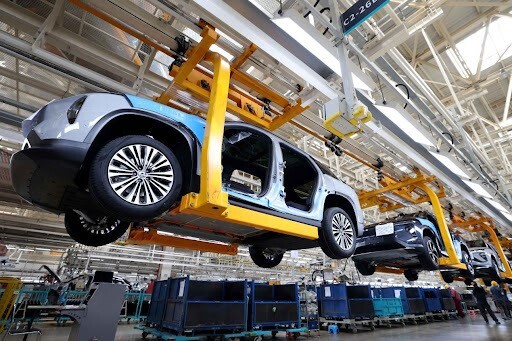

Qindao city in China’s eastern Shandong province has unwrapped its “Action Plan” aimed at driving the high-quality development of the New Energy Vehicle (NEV) industry in the city. According to the plan, by 2025, the city aims to achieve several noteworthy milestones, including an annual production target of 400,000 NEVs, with about 180,000 vehicles scheduled for export and overseas automaker revenue surpassing RMB 36 billion.

The plan also foresees the expansion of core supporting industries such as automotive electronics and power batteries to around RMB 40 billion, with special parts like tires and car bodies reaching approximately RMB 50 billion. Projections indicate a target penetration rate of about 45 per cent for new energy vehicle, with plans for over 40,000 public charging points, more than 11,000 residential charging points, and 15,000 charging points in rural areas.
Qingdao has strategically positioned itself as a thriving hub for the new energy vehicle industry, utilising its resources to establish a robust industrial ecosystem. Notably, the Chery super factory in Qindao commenced operations by the end of 2023, with the Fulwin T9 model being the inaugural unit to roll off the assembly line.
The city boasts a resilient automotive landscape, with 8 complete vehicle manufacturers, 32 modified vehicle manufacturers and a network of over 900 auto parts suppliers. Since 2018, Qingdao has collectively produced more than 400,000 NEVs, underscoring its expertise in the sector.
In addition to the outlined plan, its essential to consider broader trends shaping the industry, notably the increasing demand for aluminium in electric vehicles (EVs). The usage of aluminium extrusion, primarily driven by the building and construction sector is also significantly influenced by the transportation sector. According to AL Circle report: “The World of Aluminium Extrusions: Industry Forecast to 2030”, aluminium extrusion usage in transportation sector is projected to increase to 19 per cent from 18 per cent in 2023.
As per CRU, the combined requirement of aluminium extrusion and sheet metal for electric vehicles worldwide will be almost 10 million tonnes by 2030, and extrusion demand will be around 2 million tonnes. The market for global bauxite is also like to be increase because of demand for aluminium from the automotive and transportation industry. The global bauxite market was valued at USD 23.3 billion in 2021 and is predicted to reach USD 37.7 billion by 2030, approximately to a growth of CAGR of 505% from 2021 to 2030.
Chinese media reports suggest that by 2025, China’s new energy vehicle production capacity could outstrip predicted sales by a remarkable margin, leading to a surplus of nearly 20 million units. This depicts the market alignment to ensure sustained growth in the electric vehicle sector.
Responses








